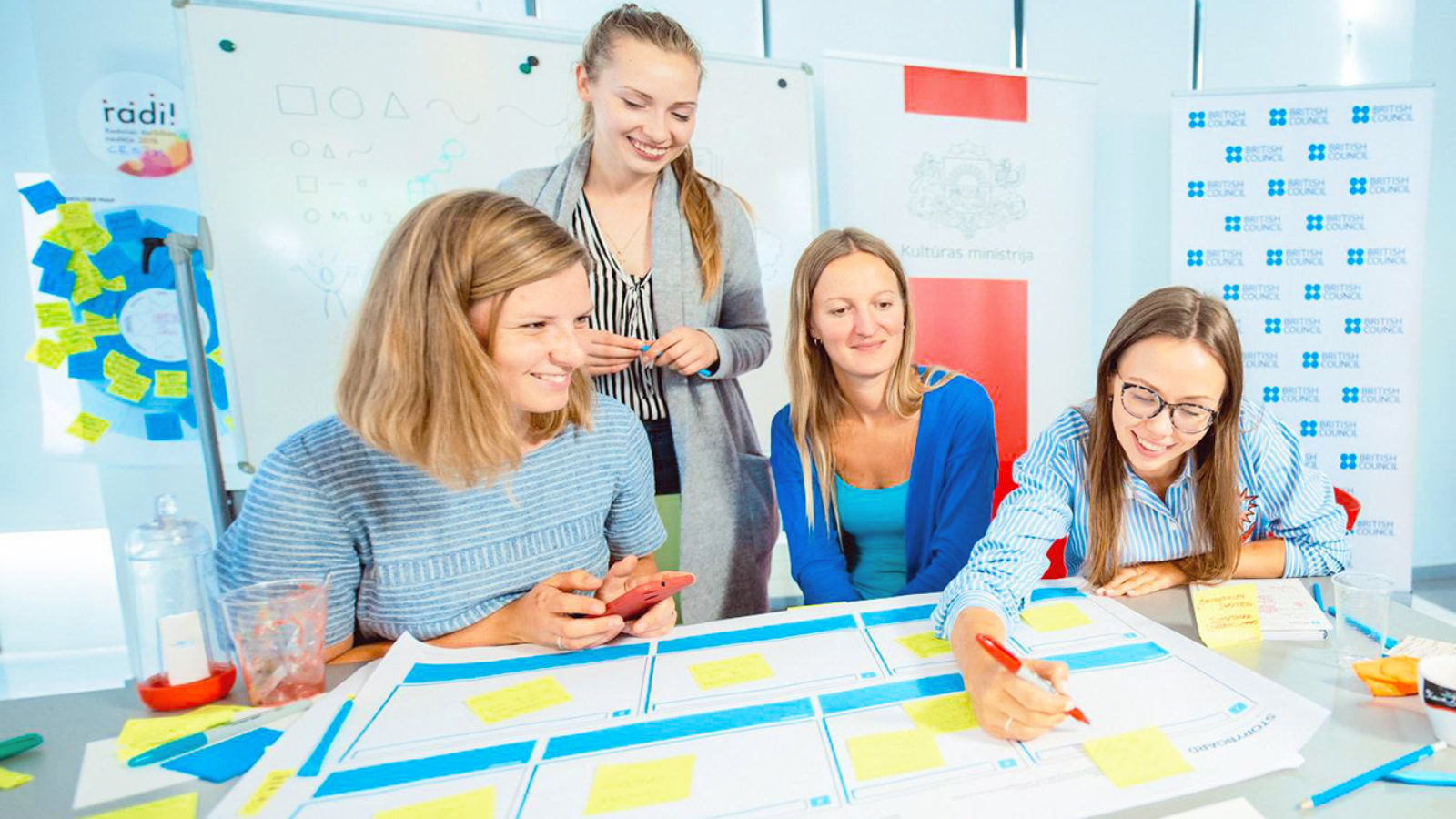Design Thinking in Latvia
radi!2018
- Focus:
- デザインポリシー
- 公共およびサービス部門
Creative problem-solving, change of mindset, development and improvement, approach and solution, adding value and branding tool is what design meant to the participants of a design thinking workshop that we had the pleasure of facilitating as part of the Latvian Creativity Week radi!2018. Design, as a human-centred approach, empowers citizens to collaborate and co-create innovative futures.

In the first part of the workshop, they mapped out all of the relevant stakeholders in order to understand the landscape and any potential gaps in coordination between actors and initiatives. Stakeholder mapping ensures that the key organisations are involved in the process and this helps to realise the impact that a project can have.
Having successfully identified the players in the Creative Ecosystem we looked at the strengths and weaknesses of the different categories of actors. In groups, the participants studied what currently works well and what needs improvement.

The emphasis of radi!2018 lies in innovation and design thinking. These form our vision of the future and provide opportunities for the active participation and involvement of young people and regions, ensuring every citizen of Latvia is part of the nationwide creation process.
Līva Stūrmane | Director of Creativity | Week radi!
In the second part of the workshop, we got creative and used both fun and engaging ideation techniques and storyboard drawing. By stepping away from conventional ways of thinking, the participants were able to generate over 100 ideas in just under an hour. Based on feasibility and potential impact, the groups then selected the most promising ideas to elaborate on further during the storyboarding session. After a brief drawing lesson by Jo, the teams began working on their concepts.


The latter part of the day consisted of the participants pitching their ideas and this was followed by the selection of the best concept. We were really impressed by the originality of ideas and the level of detail on the storyboards. In fact, the dot voting exercise led to a draw which confirmed the high quality of the concepts. Between them, the winning teams had created an awareness-raising campaign “Imagine a world without creatives” and a series of networking events aimed at coordinating and strengthening collaboration between the actors in the creative ecosystem.
Other ideas generated included improving the teaching curricula to include design at all levels of education, promoting the international successes of Latvian creatives to inspire the next generations, conducting research on the creative industries’ value to both the economy and society, and disseminating targeted messages to different stakeholder groups. This one-day workshop demonstrated the value of the design approach and how in a short amount of time it can bring together different banks of expertise to co-create both feasible and attractive ideas for improvement. We hope to see the ideas generated being taken further and implemented in the near future.


